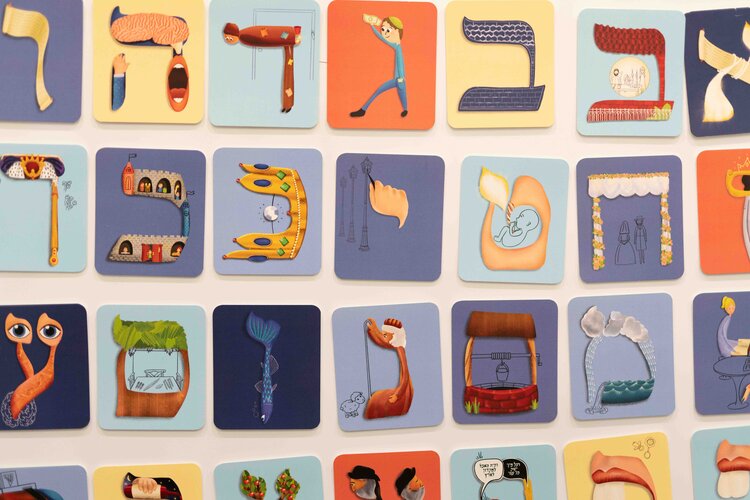The Alef Bet Stories from Torah
The idea of using the Hashem’s stories of the Alef Bet to create this curriculum resonated with me. Especially when I happened upon this story:
The Alter Rebbe once summoned a young disciple of the Maggid and said to him in his customary chant: I have the mitzvah of ‘Teach them to your children.’ You have the mitzvah of sustaining and providing for your family. Let us make an exchange. I will give you what you need to fulfill your mitzvah, and you will teach my son (who later became the Mitteler Rebbe).
Then the Rebbe explained the method of instruction: The first thing is to teach the letters, alef, beis, and so on. What is an alef? A dot above, a dot below, and a line between; this is an alef. A child must know that the alef of Torah is a yud above, a yud below, and a line of Emunah that joins them.
I thought to myself, “Why just teach alef in this way? What if we would teach all of the Alef Beis this way? What if we taught children Hashem’s stories for all the Alef Beis?”
The Research

To help learners remember the alphabet, one of the most effective methods I use is called embedded pictures. It is a technique that pairs letters with a picture, allowing the learner to make a memorable association between the two. We then remove the picture, and the learner can still remember the letter. Basically, the learner is able to use visual memory for pictures to compensate for a deficit in memory for symbols. I wanted to use this technique for the Alef Bet, but I could not find anything suitable for young learners. I found beautiful materials for more mature learners, and I found resources for English mnemonics, but I wanted Lashon Hakodesh mnemonics that would be appropriate for the youngest learners.
Across various studies, it has been found that such embedded mnemonic pictures can reduce the amount of repetition needed for kids to learn the letters and sounds, with less confusion, better long-term memory, and greater ability to transfer or apply this knowledge in reading and spelling. (Ehri, 2014; Ehri, Deffner, & Wilce, 1984; McNamara, 2012; Schmidman & Ehri, 2010)




